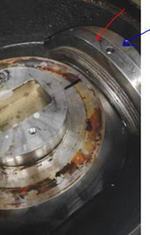Inchtain
Petroleum
- Feb 21, 2021
- 142
Hello,
I wonder if it is a common practice or a recommended way to weld the seat rings and pull them to remove the ball from top-entry ball valves?!
Is there any better alternatives?
Thanks
I wonder if it is a common practice or a recommended way to weld the seat rings and pull them to remove the ball from top-entry ball valves?!
Is there any better alternatives?
Thanks

